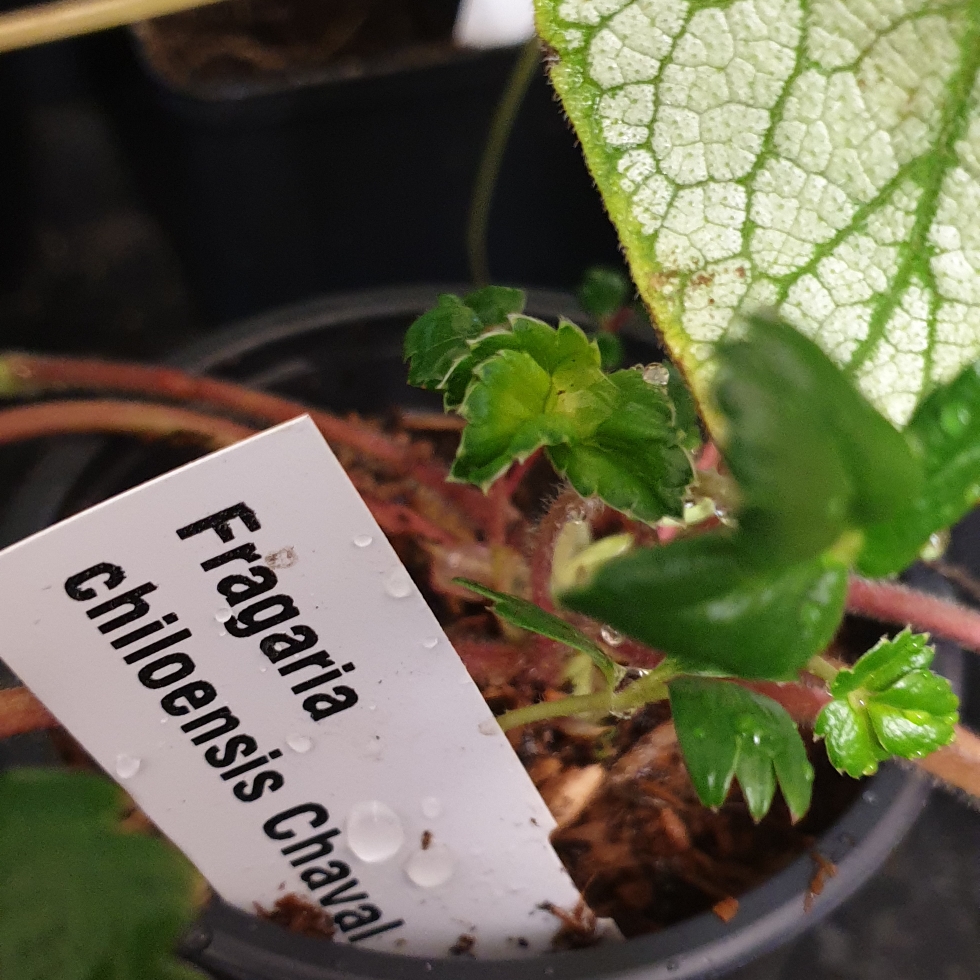
Fragaria chiloensis 'Chaval'
Beach Strawberry 'Chaval'
Fragaria chiloensis is a species Fragaria which is native to south america - Bolivia, Central and Southern Chile and Southern Argentina. It is a stoloniferous perennial and was one of the parents that were bred to make the common strawberry (Fragaria x ananassa). It has dark green leaves and produces white flowers followed by small, edible fruits in spring and summer. Prefers some shade and requires regular garden water.
Contributed by @DeborahBanks
-
Full sun to partial shade
-
Frequent watering
-
Frost Hardy: 23F (-5°C)
-
Moist and free draining
Common name
Beach Strawberry 'Chaval'
Latin name
Fragaria chiloensis 'Chaval'
type
Fruiting Plant
family
Rosaceae
ph
6.0 - 7.0 Acid - Neutral
Plant & bloom calendar
-
Best time to plant
-
When the plant will bloom
-
When to harvest
full grown dimensions
 0.40 M
0.10 M
0.40 M
0.10 M
Fragaria chiloensis 'Chaval'
Fragaria chiloensis is a species Fragaria which is native to south america - Bolivia, Central and Southern Chile and Southern Argentina. It is a stoloniferous perennial and was one of the parents that were bred to make the common strawberry (Fragaria x ananassa). It has dark green leaves and produces white flowers followed by small, edible fruits in spring and summer. Prefers some shade and requires regular garden water.
Flowering
From Late Winter TO Early Summer
Strawberries produce delicate and intricate white flowers with yellow centres. It is these flowers that eventually develop the strawberry fruit. The flowers start many months before they bloom, as tiny little yellow buds.
Propagating by runners
From Early Autumn TO Mid Autumn
Alpine strawberries will propagate themselves freely by runners - there is no need to do anything - other than controlling them, if they run rampant over space where you don't want them! They make good ground cover, due to their nature of covering every inch of soil.
Planting
From Early Spring TO Mid Spring
Plant alpine strawberry plants in Spring, in fertile well-draining soil in a sunny position. The plants will tolerate partial shade. They make very good edging plants - though runnerless varieties are best fir edging.








